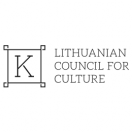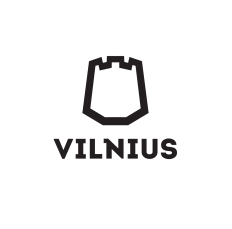The Meeting That Never Was
An exceptional opportunity to experience the works of world-renowned artists, such as Guerrilla Girls, Andy Warhol, Yves Klein and the others. Here, in Lithuania, at MO Museum!
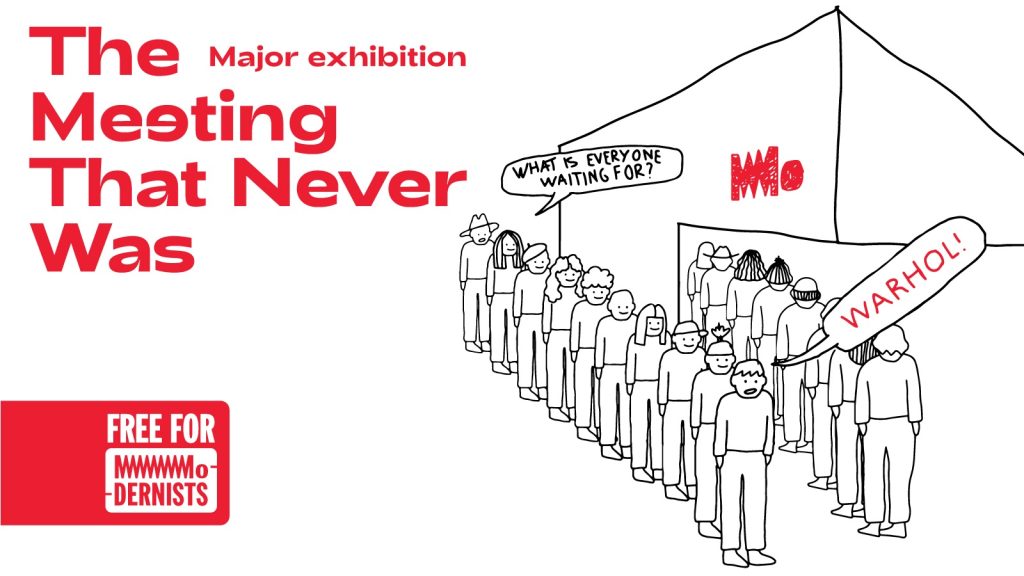
For many decades of the Cold War, an iron curtain separated the artists of the US, Western Europe and Lithuania. Have you ever wondered what would happen if worlds separated by decades of coercion were one day to meet?
This exhibition is a unique opportunity to see the work of so many different and intriguing artists – Andy Warhol, Guerrilla Girls, Yves Klein, Marlene Dumas, Maria Teresa Rožanskaitė, Deimantas Narkevičius and others – in Lithuania, and to talk about a highly significant period that continues to shape the world today.
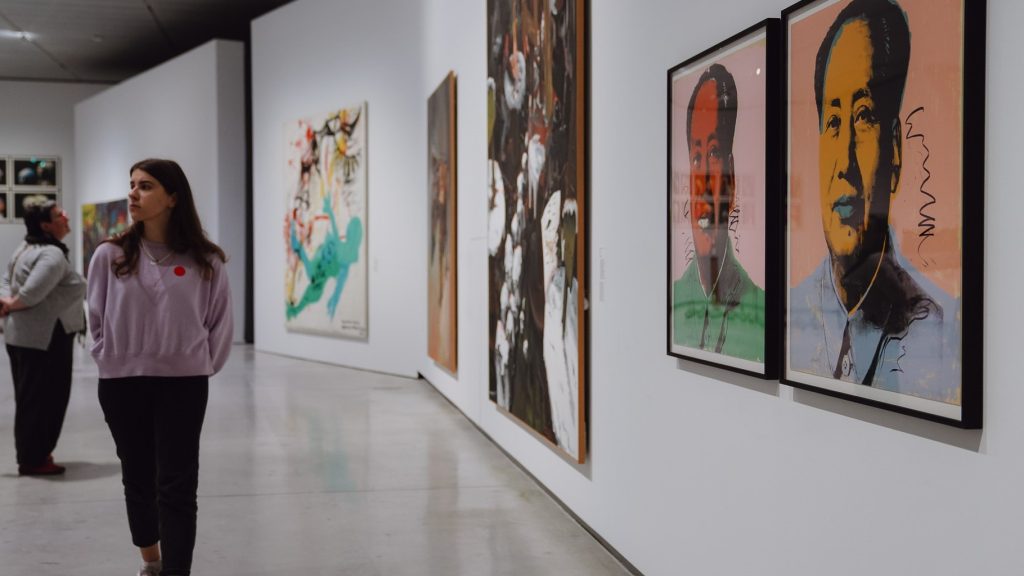
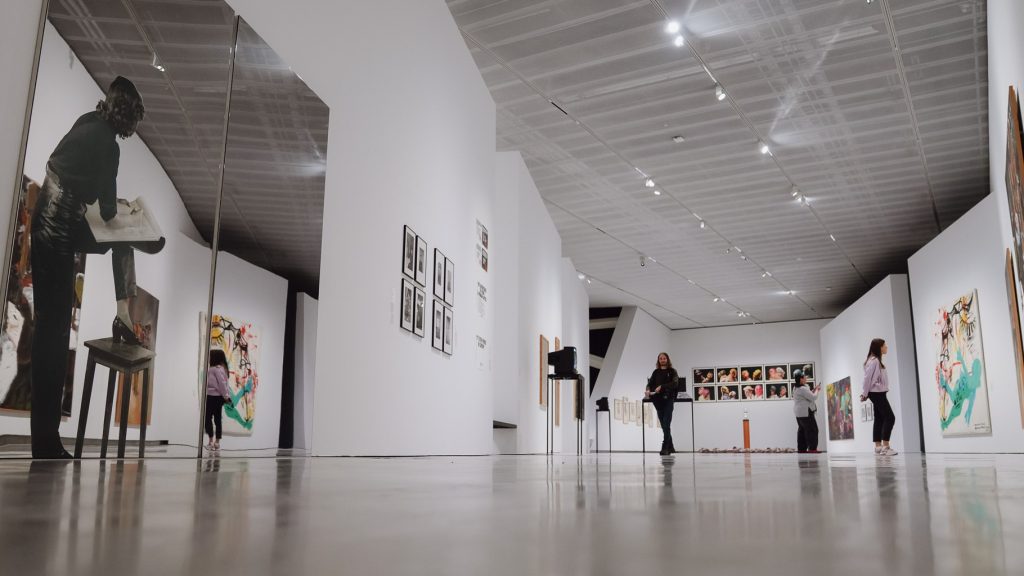
More about the exhibition
‘The Meeting that Never Was’ stages an imaginary encounter by interlacing artworks from two European collections, MO Museum and Van Abbemuseum in Eindhoven, the Netherlands. There are also some important loans from other Lithuanian collections. The artists and artworks brought together here were forcibly kept apart during the Cold War. A conversation between them has become possible only now, in Lithuania. This gives us a chance to look back at an important period of art and history that continues to shape the world today.
The artworks were made between 1955 and 2000, and their display broadly follows the course of time, beginning with Soviet socialist realism and US abstract expressionism and conceptualism as the dominating models of postwar modern art. As the exhibition unfolds, it brings in nuanced voices from Dutch, Western European and Lithuanian artists who found ways to address their own histories and struggles within the dominant currents and in opposition to them. Towards the end, there are works from the 1990s that look back at the period of the Cold War and how it could be understood immediately after it had ended.
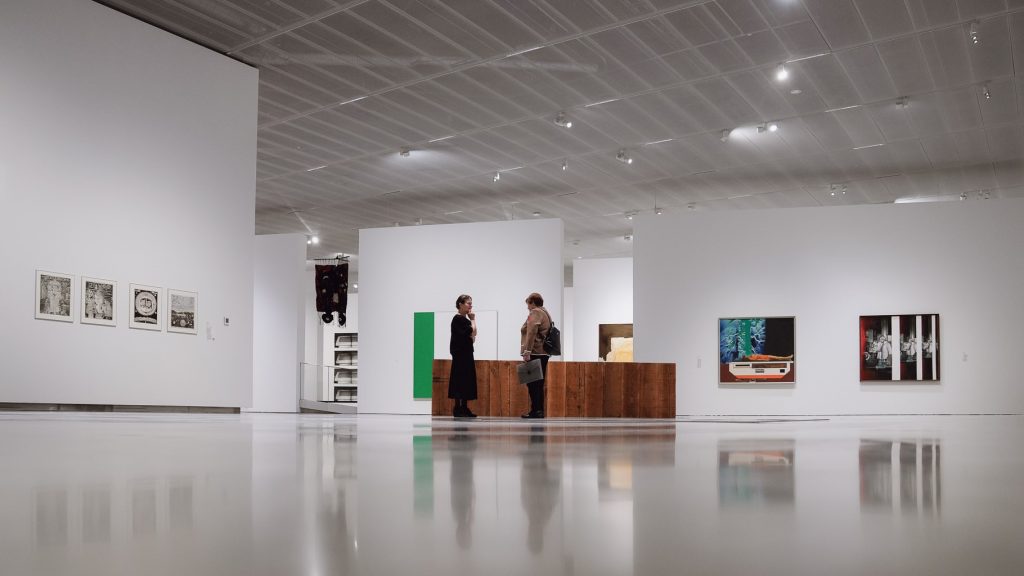
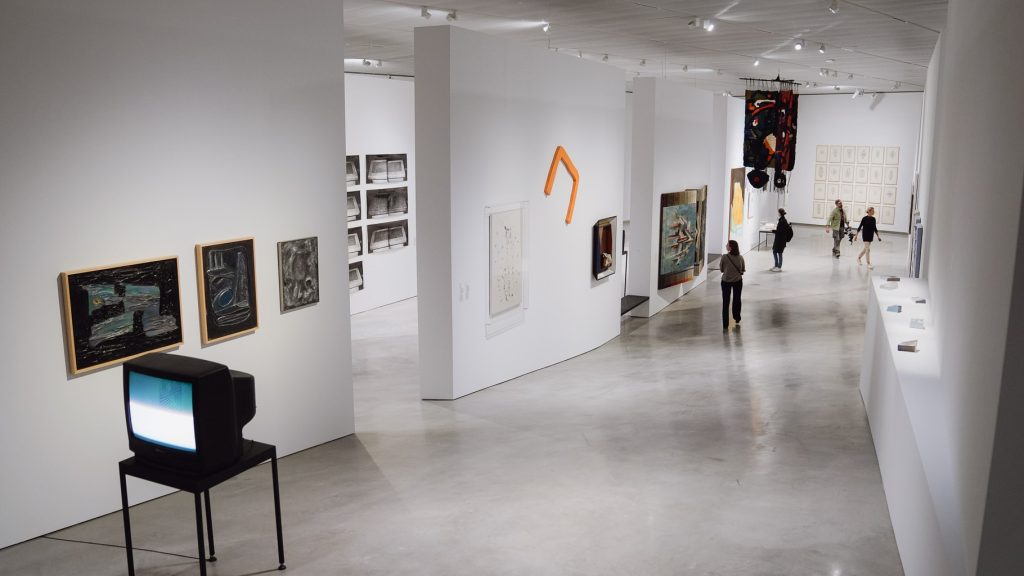
Although their political ideologies were very different, the ‘first’ and ‘second’ worlds shared postwar traumas and were overtaken in different ways by external cultural forces. Both US capitalism and Soviet communism looked at modernisation and industrialisation as levers of progress, and such similarities become clearer with the passage of time. Yet differences remain in the scale and ambition of works that were supported by the Western market system and those made unofficially for intimate artistic communities in Lithuania.
This exhibition is particularly important for the Lithuanian society, with its lived experience of the Iron Curtain. While geographic boundaries seemed to vanish after the restoration of independence, the country continues to confront complexes related to self-esteem and the drive to catch up, as well as struggles over historical memory. Perhaps this exhibition can strike a new balance. With war, populism and new Russian imperialism all around, it seems timely to see how artists on different sides found ways to stay true to themselves and remain open to international perspectives a generation or two ago.
Exhibition Team
Curators: Charles Esche, Anders Kreuger, Gabrielė Radzevičiūtė
Architect – Justinas Dūdėnas
Coordinators: Marius Armonas, Gabrielė Radzevičiūtė
Designer – Juozapas Švelnys
We would not have made this exhibition without contributions from the Van Abbemuseum (Eindhoven, the Netherlands), the Lithuanian National Museum of Art, the Lithuanian Photographers’ Association, Eugenijus Antanas Cukermanas.
Artists Featured in Exhibition
Carl André (1935), Jo Baer (1929), Joseph Beuys (1921–1986), Marcel Broodthaers (1924–1976), Günter Brus (1938), Violeta Bubelytė (1956), Eugenijus Antanas Cukermanas (1935), Juzefa Čeičytė (1922–2022), René Daniëls (1950), Jan Dibbets (1941), Milda Drazdauskaitė (1951–2019), Marlene Dumas (1953), Lucio Fontana (1899–1968), Vincentas Gečas (1931–2020), Rimtautas Vincentas Gibavičius (1935–1995), Gilbert & George, Guerrilla Girls, Henrikas Gulbinas (1960), Lubaina Himid (1954), Jörg Immendorf (1945–2007), Rimvidas Jankauskas-Kampas (1957–1993), Donald Judd (1928–1994), Patricija Jurkšaitytė (1968), Džiugas Katinas (1965), Linas Leonas Katinas (1941–2020), On Kawara (1932–2014), Ellsworth Kelly (1923–2015), Anselm Kiefer (1945), Vincas Kisarauskas (1934–1988), Yves Klein (1928–1962), Sol LeWitt (1928–2007), Morris Louis (1912–1962), Vitas Luckus (1943–1987), Vytautas Mackevičius (1911–1991), Ieva Martinaitytė-Mediodia (1968), Deimantas Narkevičius (1964), Bruce Nauman (1941), Mindaugas Navakas (1952), Lili Janina Paškauskaitė (1925–2012), A. R. Penck (1939–2017), Igoris Piekuras (1935–2006), Michelangelo Pistoletto (1933), Sigmar Polke (1941–2010), Artūras Raila (1962), Martha Rosler (1943), Marija Teresė Rožanskaitė (1933–2007), Gerhard Richter (1932), Augustinas Savickas (1919–2012), Jan Schoonhoven (1914–1994), Thomas Schütte (1954), Frank Stella (1936), Arvydas Šaltenis (1944), Algirdas Šeškus (1945), Liucija Šulgaitė (1933–2013), Marija Švažienė (1930), Gintautas Trimakas (1958), Richard Tuttle (1941), Gediminas Urbonas (1966), Sofija Veiverytė (1926–2009), Kazimiera Zimblytė (1933–1999), grupė „Žalias lapas“, Andy Warhol (1928–1987), Lawrence Weiner (1942–2021).
Organizers

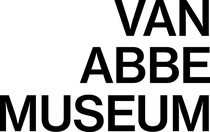
Major Partners



Information Partners

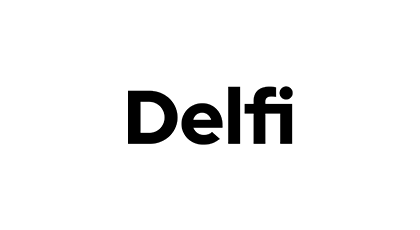



Institutional Partners
